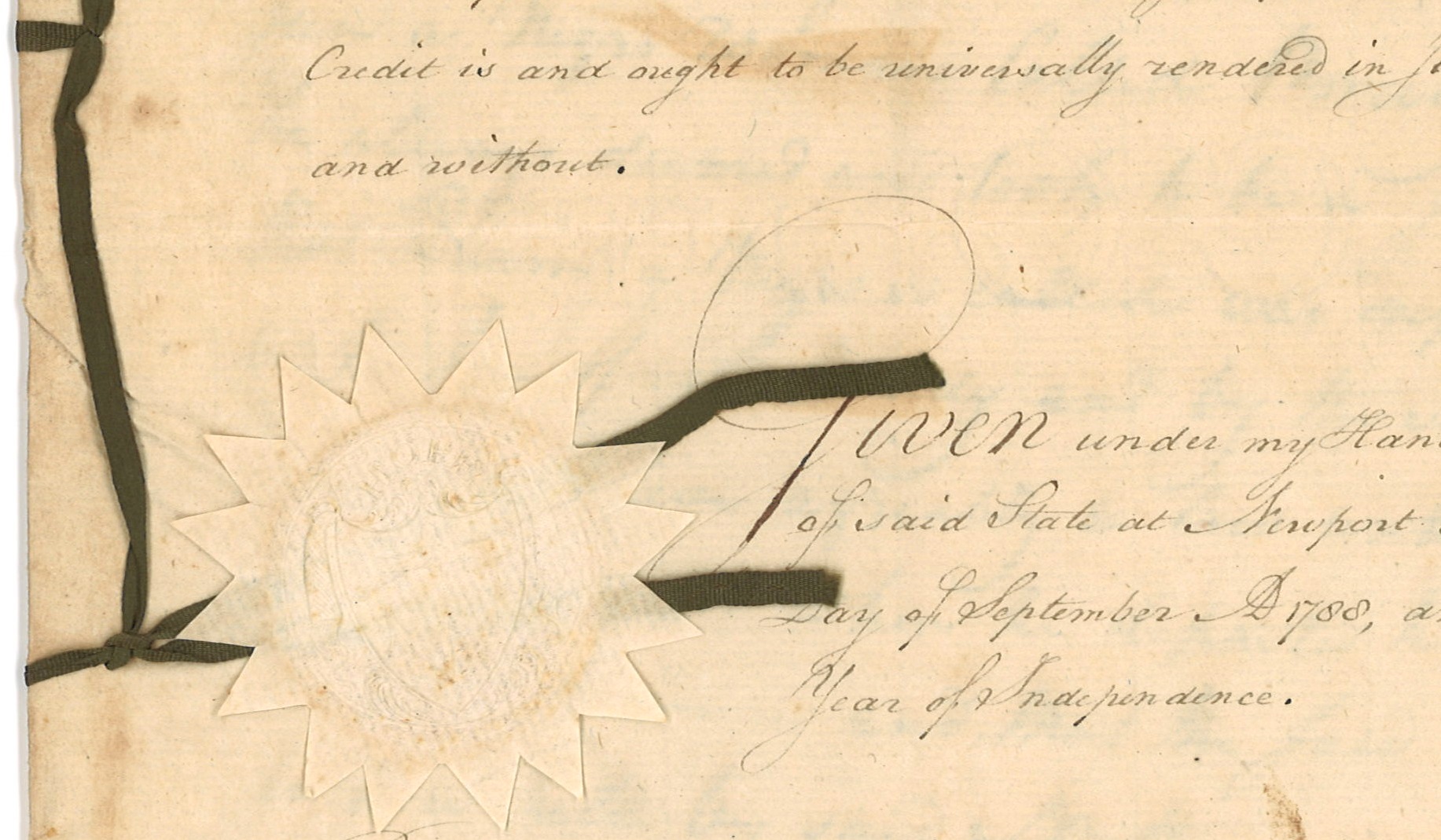
Everyone loves Rhode Island’s harbor seals but I love the seals in the R.I.H.S. Collections. They make any document more eye-catching, as their creator intended. Seals are most often used to make a document official, as with government seals, or to authenticate an individual’s signature.
Technically, the seal-making device is referred to as the seal matrix or die– the imprint it creates is the seal impression. Personal seals found on 17th and 18th Century documents at the R.I.H.S. are often most made in red sealing wax. One such example is this seal of Thomas Hazard of South Kingstown, R.I. accompanying his signature on a Deed of Land to Nathan Gardner, 21 Oct, 1748 (detail):

Back in Rhode Island, seals were used on documents as a carryover from British culture. The Colony of Rhode Island first used hand-drawn seals on town documents. According to Howard M. Chapin’s The Seal, the Arms, and the Flag of Rhode Island (Providence: R.I.H.S, 1913) “The official seal of Rhode Island has been an anchor ever since the formal union of the four settlements in May, 1647.” Those four settlements were Providence, Newport, Portsmouth and Warwick. Here is an image of the original design for the Seal from the Colonial Records of 1647 from the first session of the General Assembly held at Portsmouth in May of 1647:

Even Roger Williams was known to use the symbol of an anchor, specifically on a deed of December 20, 1661 which was sealed with an oval seal featuring an anchor. Chapin points out: “In Colonial times seals were scarce, and it was not possible for each person to have his own seal and affix it when he signed a document. Instead, generally one or two of the leading men in a town owned a seal…”
But the Colony and then the State of Rhode Island used an evolution of seals with the anchor motif. My favorite examples are the delicate paper seals that are affixed to documents with wax and embellished with ribbon. Here is a fine one from the Appointment of Nathaniel Helme Jun. Esq. as Justice of the Peace for South Kingstown, R.I., Newport, 13 Sep 1788 (detail):

~ Phoebe Bean, Librarian
